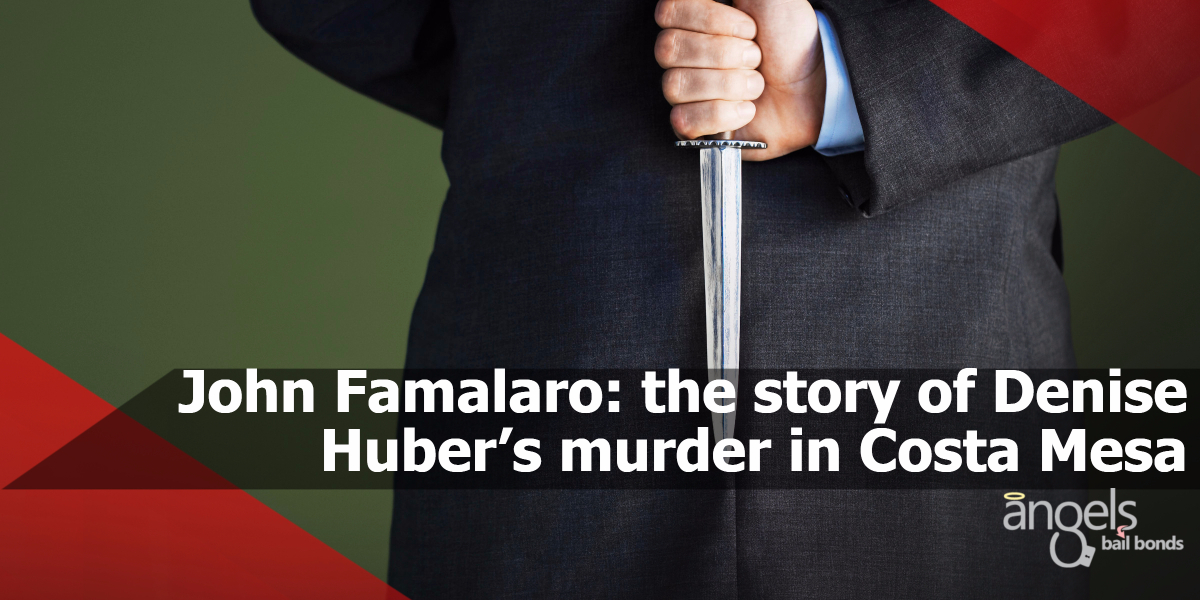John Famalaro: The Story of Denise Huber’s Murder in Costa Mesa
Quickly after 2 a.m. on June 3, 1991, 23-year-old Denise Huber was making his way home from a Morrissey performance in Inglewood when her car blew a tire on the Corona Del Mar Freeway 73 toll road in Costa Mesa.
She was just minutes away from the Newport Beach house she shared with her parents.
Even with the heels, she’d worn for the concert; it should have been a nearly quick walk to a call box or a neighboring gas station where she could have requested help.
Although her parents, Dennis and Ione Huber, never knew about Denise that night. In the morning, they started calling her friends, wondering where she could be.
That night, about 10 p.m., one of those friends found Denise’s Honda still on the side of the freeway, unlocked, its battery emptied from the blinkers left turned on. Denise just vanished.
It would take three years before police would discover Denise’s body.
During that time, her family placed a 6-by-30-foot banner on the roof of an apartment building overlooking the area where they found her abandoned car. It read “Have You Seen Her?” and included Huber’s likeness, physical information and the Costa Mesa Police Department phone number.
The parents appeared on television to share their story as they worried and waited for any piece of information.
In 1994, a local paint shop proprietor, Elaine Court, arranges to purchase paint from Prescott, Arizona resident John Famalaro. Upon this appointment, Court notices a Ryder Truck in the driveway. Finding the truck to be strange, she contacts local police and asks them to examine. What began only as a routine check up soon turns into a homicide case.
Find a Bail Bondsman in Costa Mesa, CA
Police gather on the Famalaro home only to discover that placed in the back of the truck, is a freezer. Its contents, a frozen body, later recognized as 23-year-old Denise Huber vanished three years ago.
Inside the home, detectives find more evidence that the house had seen a murder. A box marked as “X-Mas decorations” holds a bloody hammer and nail puller. Guns and handcuffs scattered around the home. Inside a closet, investigators discover an LA Sheriff’s Patrol shirt; all signs that Famalaro kidnaped Denise by gaining her trust acting like a cop.
Detectives embark on a forensic mission to retrace the footsteps of a cold case murder. The first action in this quest is to determine the way in which Denise Huber died. With 85-degree average temperatures, Maricopa County rarely deals with frozen bodies. They resort to an old fashion method. A hairdryer is used to successfully melt the frozen corpse, taking special care not to damage the fingerprints.
Forensic anthropologist Laura Fulginetti reconstructed Huber’s skull to find that Famalaro beat her to death with both the hammer and a crowbar obtained from Famalaro’s home. Detectives also used luminol, a chemical spray that makes body fluids glow, to determine exactly where the scene of the crime took place.
Famalaro sexually assaulted Denise and killed her by crashing a nail remover into Denise’s skull 30 times in a Laguna Hills shed where he resided and operated his painting business.
Instead of disposing of the body, Famalaro kept it in a large freezer, even taking it with him when he moved to Arizona.
Explore and get informed with some Bail Bond Resources
The California Supreme Court confirmed the death penalty for John Famalaro. The justices decided unanimously that 60 54-year-old Famalaro received a fair trial on his way to a conviction in Orange County Superior Court in 1997.
Famalaro’s appellate court attorneys attempted to argue he was denied a fair trial due to massive media attention. Justices did not buy it. After considering for less than three hours, Famalaro is convicted of first-degree homicide with a death penalty sentence, writing in their decision that Judge John J. Ryan conducted a fair jury selection and trial.
The killer’s legal team had to appeal to the U.S. Supreme Court, a process that took years to resolve. Famalaro pleaded not guilty but remains silent in his convictions of innocence. But it’s not like Famalaro would have been quickly put to death anyway as California imposed an informal moratorium on the capital penalty while the argument on the legality of lethal injections continues. So, for at least the next several years, Famalaro will remain on death row at San Quentin.
In 2011 his death penalty was once again affirmed by the Supreme Court.
Watch a video about this horrendous crime.





